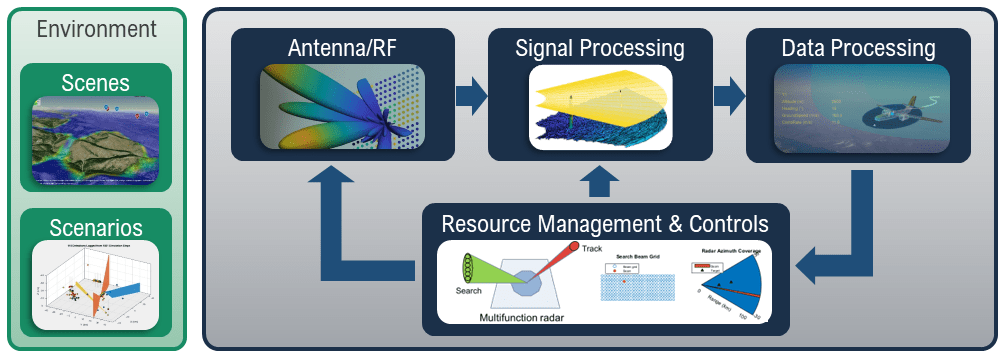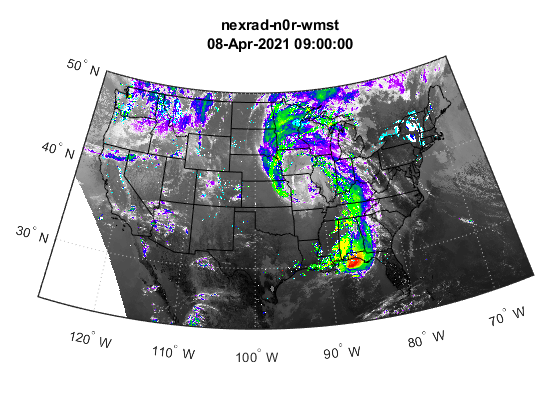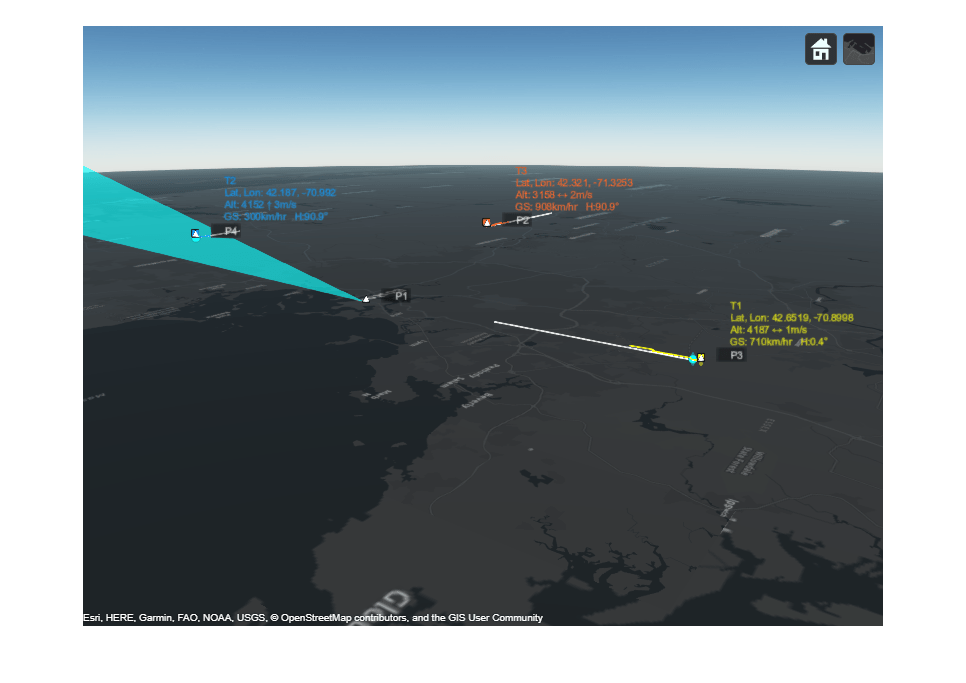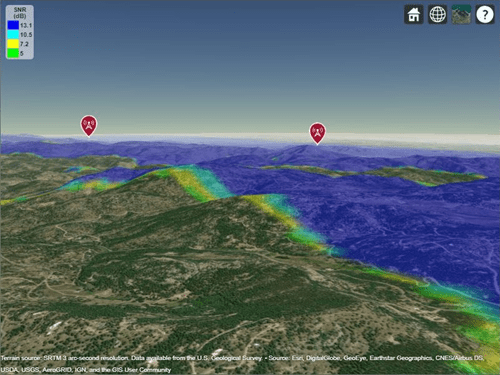雷达
设计、仿真和测试雷达系统
雷达工程团队使用 MATLAB® 和 Simulink® 来设计、分析、仿真和测试多功能雷达系统。将 Radar Toolbox 与其他 MathWorks® 产品结合使用,可以缩短开发时间,尽早消除设计问题,并简化机载、陆基、海上和汽车雷达系统的分析和测试。

使用 MathWorks 针对雷达系统提供的产品,可以开发支持雷达系统完整生命周期的模型:
执行链路预算分析,进行架构建模并评估系统设计利弊。
创建地理参考场景并仿真雷达信号、检测和轨迹。
针对不同波形和相控阵前端设计信号和数据处理链。
自动生成用于原型构建和部署的 HDL 或 C 代码。
适用产品: 雷达
主题
雷达系统工程
- Radar Link Budget Analysis (Radar Toolbox)
Use the Radar Designer app to perform a link budget analysis when designing a radar system. (自 R2021a 起) - Radar Architecture: System Components and Requirements Allocation (Part 1) (Radar Toolbox)
Starting from a set of performance requirements, design, implement, and test a radar system in Simulink - Part 1. (自 R2021a 起) - Define and Test Tracking Architectures for System-of-Systems (Sensor Fusion and Tracking Toolbox)
This example shows how to define the tracking architecture of a system-of-systems that includes multiple detection-level multi-object trackers and track-level fusion algorithms. (自 R2021a 起)
雷达场景仿真
- Radar Performance Analysis over Terrain (Mapping Toolbox)
The performance of a radar system can depend on its operating environment. This example shows how radar detection performance improves as target elevation increases above the terrain. - Simulate and Track Targets with Terrain Occlusions (Sensor Fusion and Tracking Toolbox)
This example shows you how to model a surveillance scenario in a mountainous region where terrain can occlude both ground and aerial vehicles from the surveillance radar. (自 R2022a 起) - Simulated Land Scenes for Synthetic Aperture Radar Image Formation (Radar Toolbox)
Simulate I/Q signals from a synthetic aperture radar (SAR) system that uses platform motion to mimic a longer aperture to improve cross-range resolution using a range migration focusing algorithm. (自 R2022a 起)
多功能雷达
- Adaptive Tracking of Maneuvering Targets with Managed Radar (Radar Toolbox)
Employ radar resource management to efficiently track multiple maneuvering targets and use an interacting multiple model (IMM) filter to estimate when the target is maneuvering to optimize radar revisit times. (自 R2021a 起) - Multibeam Radar for Adaptive Search and Track (Radar Toolbox)
UseradarDataGeneratoras part of a closed-loop simulation of a multifunction phased array radar (MPAR) tracking multiple maneuvering targets. (自 R2022b 起) - Track Space Debris Using a Keplerian Motion Model (Sensor Fusion and Tracking Toolbox)
This example shows how to model earth-centric trajectories using custom motion models withintrackingScenario, how to configure afusionRadarSensorin monostatic mode to generate synthetic detections of space debris, and how to setup a multi-object tracker to track the simulated targets.
雷达天线、波束成形和波形
- Modeling Mutual Coupling in Large Arrays Using Embedded Element Pattern (Phased Array System Toolbox)
Model mutual coupling effects between array elements by using an embedded pattern technique. The example models an array two ways: (1) using the pattern of the isolated element or (2) using the embedded element pattern, and then compares both with the full-wave Method of Moments (MoM)-based solution of the array. - Conventional and Adaptive Beamformers (Phased Array System Toolbox)
Apply three beamforming algorithms to narrowband array data: the phase shift beamformer, the minimum variance distortionless response (MVDR) beamformer, and the linearly constrained minimum variance (LCMV) beamformer. - Radar and Communications Waveform Classification Using Deep Learning (Phased Array System Toolbox)
Classify radar and communications waveforms using the Wigner-Ville distribution (WVD) and a deep convolutional neural network (CNN).
代码生成和部署
- Rectangular Array MVDR Beamformer (Phased Array System Toolbox)
Implement a minimum-variance distortionless-response (MVDR) beamformer for a 4x4 rectangular antenna array on FPGA. - Processor-in-the-Loop Verification of JPDA Tracker for Automotive Applications (Sensor Fusion and Tracking Toolbox)
Generate embedded code for a JPDA tracker and verify it using processor-in-the-loop (PIL) simulations. (自 R2022a 起)




